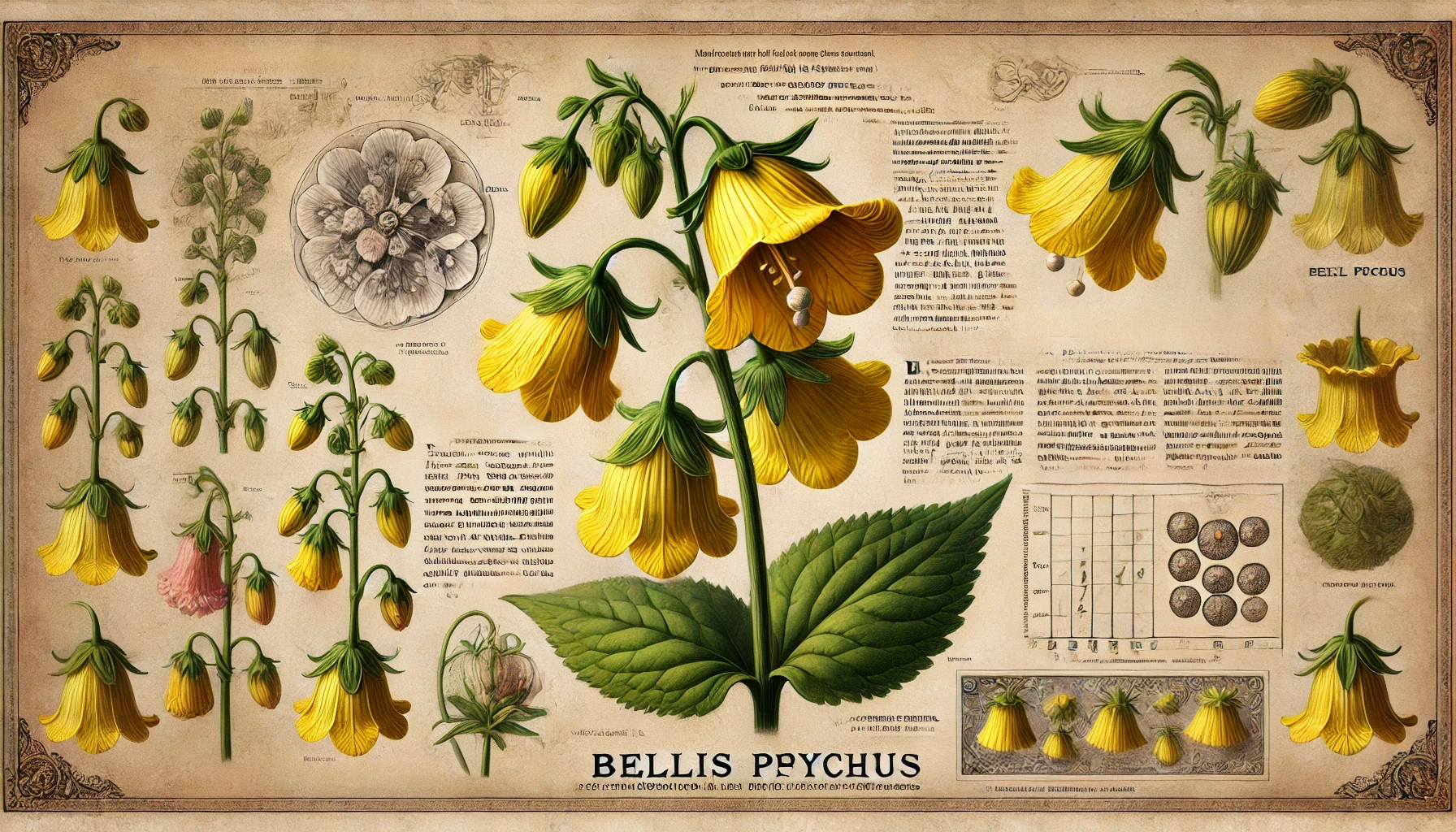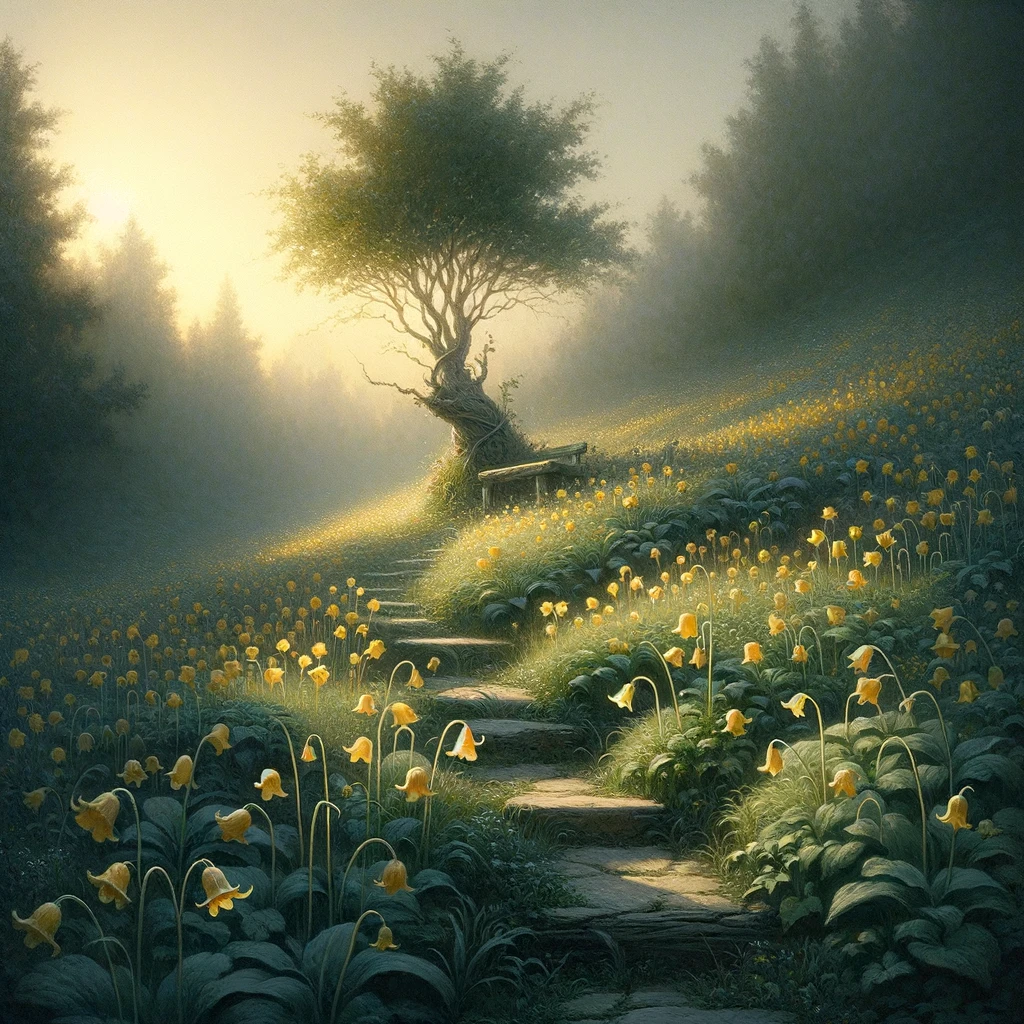Visual Description
The Yellow Psychebell is a tall, slender-stemmed plant bearing bright golden bell-shaped blooms, each about four inches long. At first glance, it resembles a common bellflower—until the breeze stirs it. The petals, gently overlapping at the base, are structured to chime melodically when they sway, producing soft, ethereal tones. This gentle music increases in complexity when insects or animals approach, with clusters of flowers ringing in subtle harmony. The sound is never loud, but carries clearly across quiet fields, drawing attention like a whispered invitation.Habitat and Growth
Psychebells flourish in open grasslands, most commonly found growing atop low mounds or hillocks, where wind can pass cleanly through their petals. They favor full sunlight and shallow, well-drained soil. The plant’s reproductive strategy relies on both sound and chemistry: its musical chime lures pollinators close, while its fine yellow pollen induces mild hallucinations, gently disorienting the creature enough to visit other nearby blooms. These “dizzy pollinators” often move in spirals, ensuring broad pollen distribution.Alchemical Use and Preparation
The dried blooms of the Yellow Psychebell, when properly prepared, create a fine powder used in infusions or incense. This preparation heightens awareness, sensory clarity, and subtle perception, making it popular among watchmen, duelists, spies, and seers. It does not offer foresight, but it sharpens one’s reading of subtle cues—a flicker of emotion, a change in air, a faint sound in the distance. Psychebells are best harvested in the morning, when the blooms are fresh and the chime’s harmonics most stable. The dried flowers must be stored in ventilated wooden boxes, as sealed storage dulls both scent and effect.Warnings and Curiosities
Prolonged exposure to the plant’s chimes—especially when lying in dense clusters—can lead to mental overstimulation. Listeners report heightened alertness tipping into restlessness or anxiety, sometimes paired with looping thoughts or fragmented perception. It is commonly mistaken for the Golden Bellflower, which shares its shape and color but lacks any musical quality.Historical Notes and Folklore
Once used in seers’ chambers and meditation shrines, the Yellow Psychebell was believed to “tune” the mind to unseen truths. Practitioners would sit among the chimes, allowing them to ring freely while focusing inward. A more recent saying among hedge-wizards warns:“One bell sharpens the ear. A dozen clatter the soul.” In some rural traditions, a single Psychebell bloom is still hung near a newborn’s cradle—not for clarity, but to ward off unseen influence, ensuring that what the child hears is truly their own thought.
“The Psychebell doesn’t tell you anything new—it just makes you hear what you already knew, louder.”
The Duel That Wasn't
In a border town tribunal, two merchants accused each other of contract manipulation using enhanced incense. A duel was agreed upon. On the morning of the event, one duelist spent an hour alone in a field of blooming Psychebells, listening to the chimes. When he returned, he said only: “He’s right. I did it.”The duel was canceled.
The field, afterward, was quietly burned.
The Widow's Grove
There’s a tale of a woman who lost her husband in war, and spent the rest of her years tending a hillside garden of Yellow Psychebells. Locals avoided the spot—some said the chimes whispered names, others claimed they heard conversations in their own voices. The garden remains, overgrown but alive.It’s said if you sit there at dawn, the bells will ring a memory only you remember.



Comments